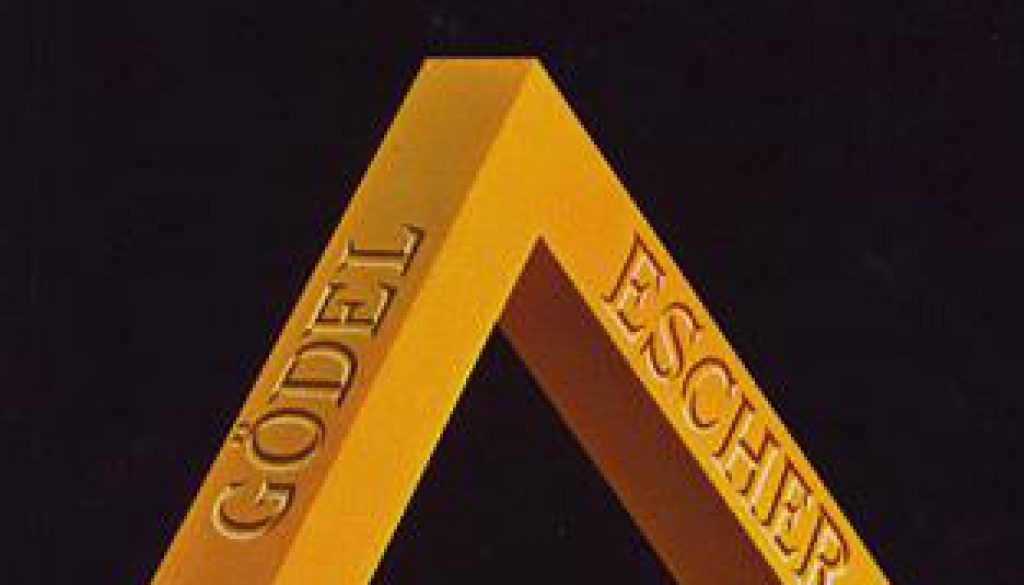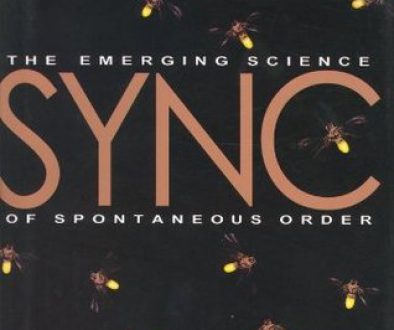Godel Escher Bach 《集异壁》
一八年、五月末始。Start reading this book at the end of May 2018.
The first time I heard of this book was from one presentation for Prof Shoucheng Zhang。The topic of his talk is “In Math we trust”.
Almost every point of his talk was once I was very interested in, then I came to the book without hesitation. Before I start reading the book, I went throug some of the book reviews, just like people can’t help swearing when they got shocked, most people can only use magic book these short description for this book。This are even lectures for this book in MIT. For interest, I start to read the book and will write something interesting periodicity to strengthen my understanding. If possible, also help others to appreciate this book :D.
Fugue
This book is well known by it’s articulate structure, it is well designed, and tricks could be appreciated at multiple scales of the content. From coherence between each chapter to conversation inside one chapter, even, within a sentence!
leaves fall season fall leaves. (When we consider the leaves can represent both the plants as well as the action of leaving ) you could also get another: leaves fall season fall leaves. In Chinese, we call this structure 回文,”落叶天叶落”. In genomics, we also have Palindrome sequence。
They are symmetric and echo back and forth.
There is a special word called Fugue to describe a condition contains repeat and symmetry, it comes from a Latin word “Fuga” which means fly. We could see Fugue showed many areas, and sometimes I feel like hard to define it.
- Geology:This particular crystal has a fugue-like structure to it.
- Painting: Artist Franz kupka 、Henry Valensi 、Josef Albers has fugue style’s work.
- Book: The whole book of GEB is like fugue.
- Music: that’s where it originates from. The most famous one may be written by J.S.Bach “The Well-Tempered Clavier”. Why this name? Sounds odd. Clavier just means keyboard, but in Bach’s age, there is no tunning system that can guarantee all of the pitches were exactly a half step apart.
Why not appreciate Musikalisches Opfer, Bach BWV 1079 first?
Do you see any specialty in this song? So in a fugue, what you get is one voice going ahead, leading ahead, and another voice following and imitating it exactly. Voice can be either actual voice or written for instruments. If the follower is exactly the same as the previous one, then it becomes Canon or round. But fugue is, after the main part (Subject) is stated, then other parts go their independent ways, generating counterpoint.
If we look at the music tabs of BWV 1079, we could see some basic pattern repeat themselves with shift and flip! Actually, the tune is ascending and at some point flipped and congruent without consciousness. We call this infinite ascending which could also be seen in Escher and Godel.
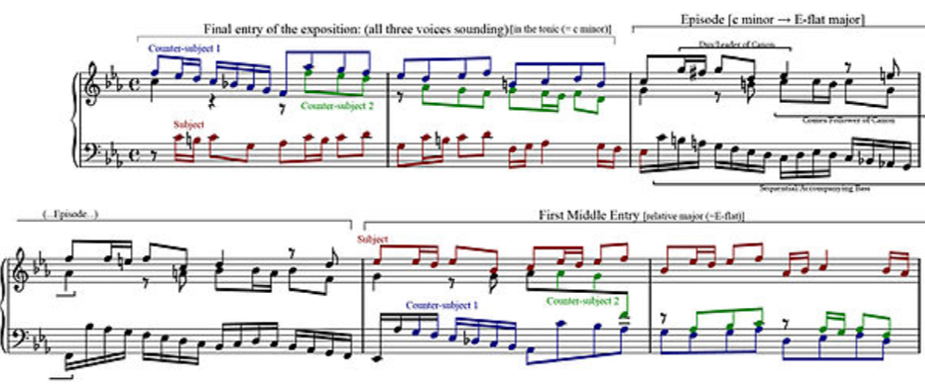
Infinite ascending also presented in Escher’s picture:
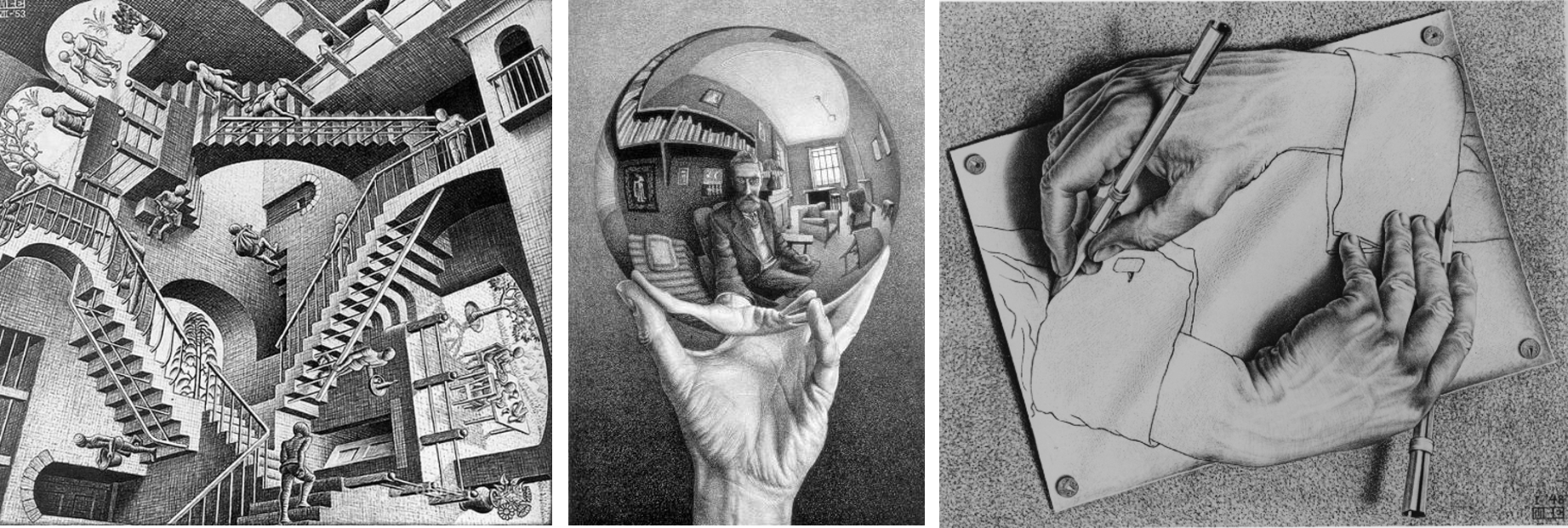
In Echer’s picture, he’s mastered in this kind of style: Infinity, symmetry, repeats and one more import: self-indicate. Self-indicate is also something connects which another hero of the book —— Godel. Before we have time to know what Godel is famous for and what’s the deeper relation among them three. There is more examples of this finite ascending we could play with:
GNU’s Not Unix! —— GNU is an operating system which coorporates with linux system and now we get used to call them linux. GNU itself is a recursive acronym for GNU’s Not Unix.
This kind of infinite is very interesting! It reminds me of quite a lot of ideas, what about this? – Hilbert Curve:
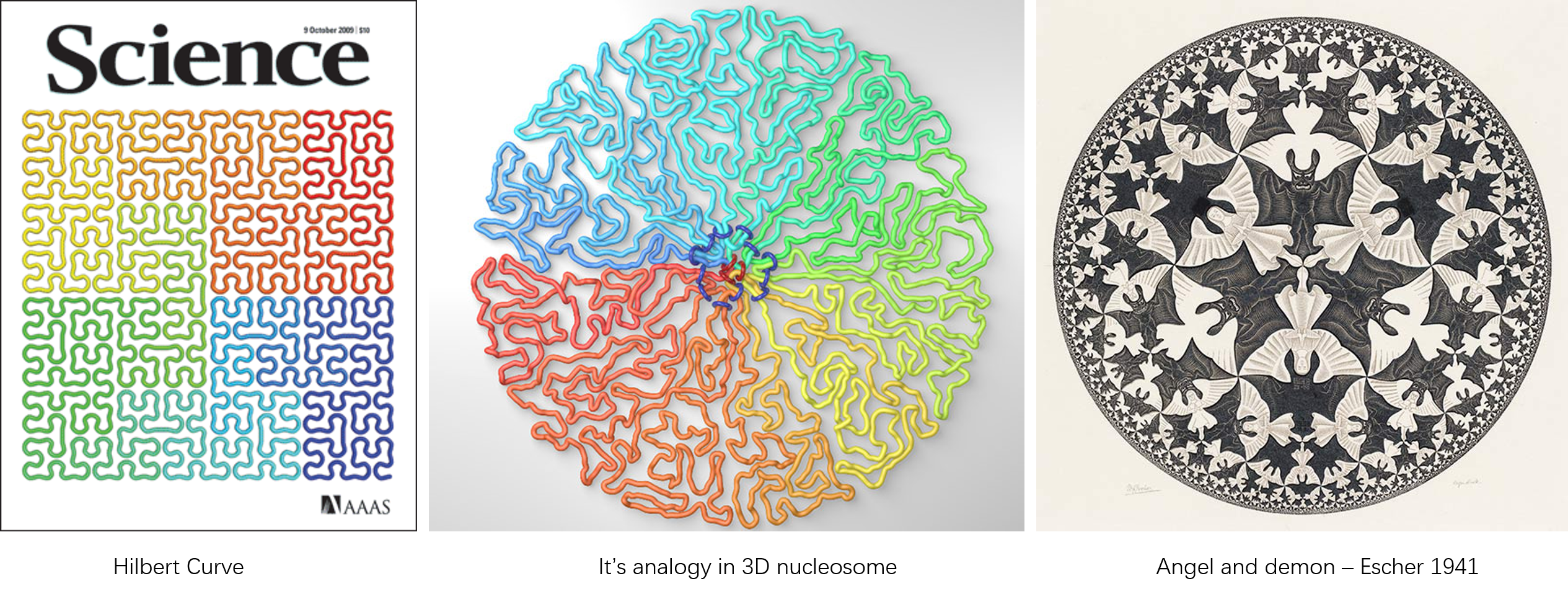
Here is another brain mystery, from https://xkcd.com/1163/.

Okay, I’ll stop here at present. If you’re interested go and get one to read :]
Figures all come from google, might subject to copyright.
